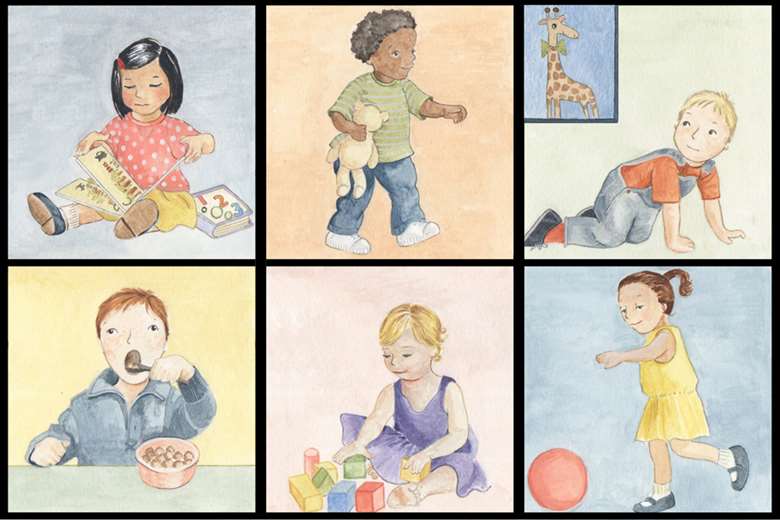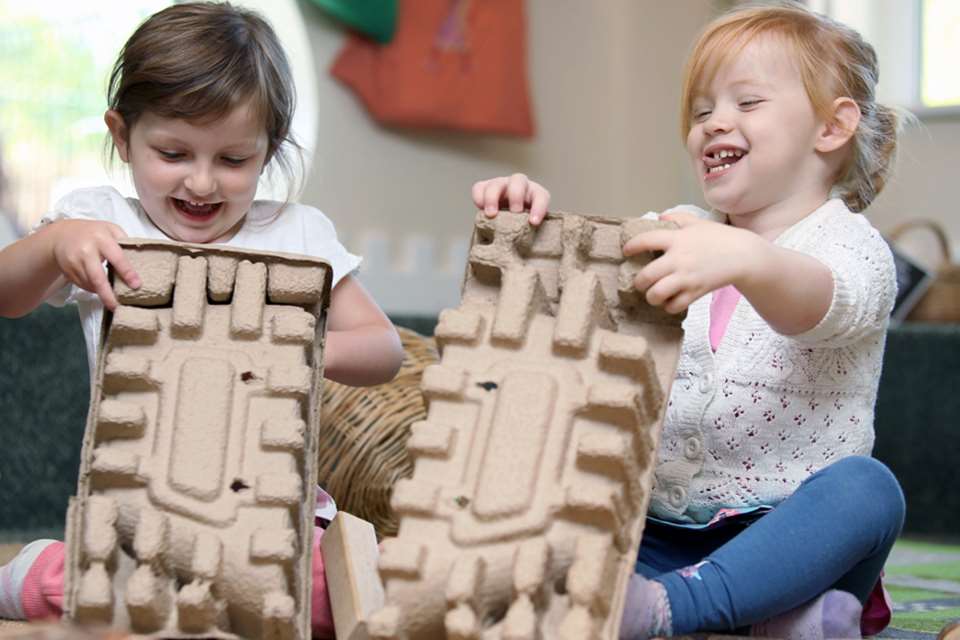A Unique Child: Integrated Review - And to follow
Dr Kay Mathieson
Monday, March 7, 2016
Good follow-up practice is vital in making the most of the Integrated Review, writes Dr Kay Mathieson

As local authorities and practitioners explore ways to make the Integrated Review of two-year-olds happen consistently and as part of a coherent relationship with parents, it is important that we think beyond the meeting itself to gain maximum benefit for the child.
When conducted with a high degree of professionalism, the Integrated Review is invaluable, as it brings together the combined knowledge of parents and professionals, in both health and early years. But the review will be effective only if the follow-up has the same level of integrity and accountability. With local authorities at different stages of implementation and promoting different models of working, are we really making the most of the opportunity?
ALL IN ONE ROOM?
Ideally, the review should take place with the health and early years professionals and parents, along with their child, in the same room. Such an approach enables them to observe and talk about the child’s care and progress, as well as discuss any concerns about the child’s development. Bringing together these different perspectives also provides an insight into the ‘child in context’, that is the wider social realities of the child’s life, including the impact of any protective or risk factors. From this strong platform of joint working, professionals and parents can work together to identify a child’s specific needs and decide how to secure appropriate support.
The reality, however, is that several barriers are sabotaging this ideal. First, lack of strong leadership and clear messages about the need to strive for the ‘all in one room’ model is sometimes causing complacency and allowing the disconnected health reviews and early years Progress Check to continue.
Secondly, there is a reluctance among some health and early years professionals to work together and understand each other’s roles and perspectives, making shared and effective problem-solving impossible. Individuals need to be proactive in making contact and exploring ways of working together for everyone’s benefit.
Thirdly, the relationships between practitioners and parents are not always proving to be strong enough to empower parents and enable them to become key decision-makers in the process.
OUTCOMES
While the emphasis at the moment is on making sure the Integrated Reviews happen, we overlook the outcomes and follow-up at our peril. At the very least, there should be greater clarity about, and secure evidence of, the child’s progress. The review meeting should not be a ‘one-off’ experience for parents, but part of their ongoing relationship with early years and health practitioners.
By talking face-to-face and sharing individual views, parents and professionals can consolidate relationships, so allowing differences in opinion to be explored and evidence examined.
There are three possible outcomes from a fully integrated review meeting:
Everyone is very happy with the child’s progress and no-one raises concerns or offers suggestions about more effective ways of supporting the child or their family.
Parents and early years practitioners gain insights into how they can more effectively provide day-to-day support for the child’s learning.
Concerns about the child are raised, requiring additional observation, exploration or referral to specialist services.
It is tempting to think that the first outcome is the most desirable. However, I would suggest that this is the least successful – and least likely – outcome of discussions between such key people in a child’s life.
Surely, bringing together different perspectives for the first time must uncover new insights into the child, their progress and how they can best be supported in future. This is likely to be true for both parents and professionals. Indeed, in their feedback, parents have highlighted ‘learning about my child’ as one of the major benefits of the Integrated Review, as opposed to the previous separate health and early years checks. They also report that since the review discussions, they have engaged their children in different activities at home.
‘WAIT AND SEE’ AND ‘LOOK AND LEARN’
When summarising the key points at the end of a review meeting, it may be tempting for professionals, and parents, to suggest that while concerns have been raised, the course of action should be to ‘wait and see’.
No doubt the child will continue to make some progress; however, we should aim to be proactive and develop learning opportunities tailored to their individual needs. By thinking carefully about our provision, enabling environment, positive relationships and the child’s characteristics of effective learning, we can establish increasingly effective ways to support the learning of the Unique Child.
‘Wait and see’ is perhaps better thought of as ‘look and learn’. Sharing observations from home and in the setting will help us to deepen our understanding of the child, just as gathering evidence of the impact of our strategies and approaches will help establish our effectiveness.
REFERRAL PATHWAYS
The Integrated Review is a key tool in the early identification of a child’s needs. However, it is equally important to ensure that once identified, these needs are supported through early interventions that are tailored to the individual child. These interventions may involve particular strategies to be used in the setting, activities for parents to use at home or advice and support beyond the setting.
Each local authority and health trust is likely to have different referral routes, as well as varying thresholds for accessing support, linked to the age of the child or the severity of need. It is essential, therefore, that health and early years professionals attending review meetings are clear about local referral pathways, in particular for:
- speech and language therapy
- social/communication support
- educational psychology
- occupational therapy
- behaviour support/advice
- mental health support– child and adolescent mental health services (CAMHS)
- advice/support related to sleep, nutrition and toileting
- earlyhelp – holistic family support.
- Some support may be available from the NHS or local authority, but essential too is that professionals carrying out reviews are aware of local charities and other voluntary sector provision that can offer significant support for families. Before attending meetings, we should be clear about:
- what all the local specialist services are able to offer
- who can make a referral
- what thresholds for referral are in place
- how long waiting times are
- what will happen after a referral is made
- if there are any specific referral routes that may be relevant in this particular review.
PROFESSIONAL AND SUPPORTIVE COMMUNICATION
Each integrated review meeting will be different, with some highlighting emerging concerns and others celebrating specific progress.
The quality of interactions between the practitioners will set the tone for the discussions in the review. Skills identified in the recent National Children’s Bureau report (Kumari 2015) that were present in an effective Integrated Review include:
- having a relaxed approach
- being open and honest
- using jargon-free language
- having empathy
- respecting parents’ views
- listening
- giving appropriate eye contact
- commenting and asking questions to clarify understanding.
Open-mindedness on the part of practitioners will enable parents to feel at ease and better able to share their thinking about their child’s progress. Health and early years practitioners will, in turn, be able to be responsive to parents’ interests, concerns and delights about their child’s development. In some cases, this will mean that parents feel better able to express previously unvoiced worries, therefore requiring practitioners to listen carefully and respond with coherent messages.
It is important that the trust built up through such positive engagement and reflection in the meeting is maintained by an effective follow-up. This will include:
- carrying out agreed actions
- providing a record of the discussions in the meeting
- sharing information beyond those who attended as agreed
- making referrals to specialist services
- providing feedback about the impact of any strategies or making referrals.
LOOKING FORWARD
There are increasing examples of innovative practice where practitioners from health and early years are overcoming barriers of space, timing, traditional working and histories of misunderstanding. As these barriers are overcome, it is important to celebrate and share these successes including how the follow-up process has improved since using the integrated, rather than separate, review format.
If you have an example of overcoming barriers and/or effective follow-up from an integrated review, I would be interested to hear about it and to share this more widely with health and early years practitioners. Email: kay@kaymathieson.co.uk
MORE INFORMATION
Kumari, V (2015)The Integrated Review: follow-up report on practice in two local authority areas. Available, along with further guidance developed from the report, at www.ncb.org.uk
[asset_library_tag 1115,Download the PDF]










